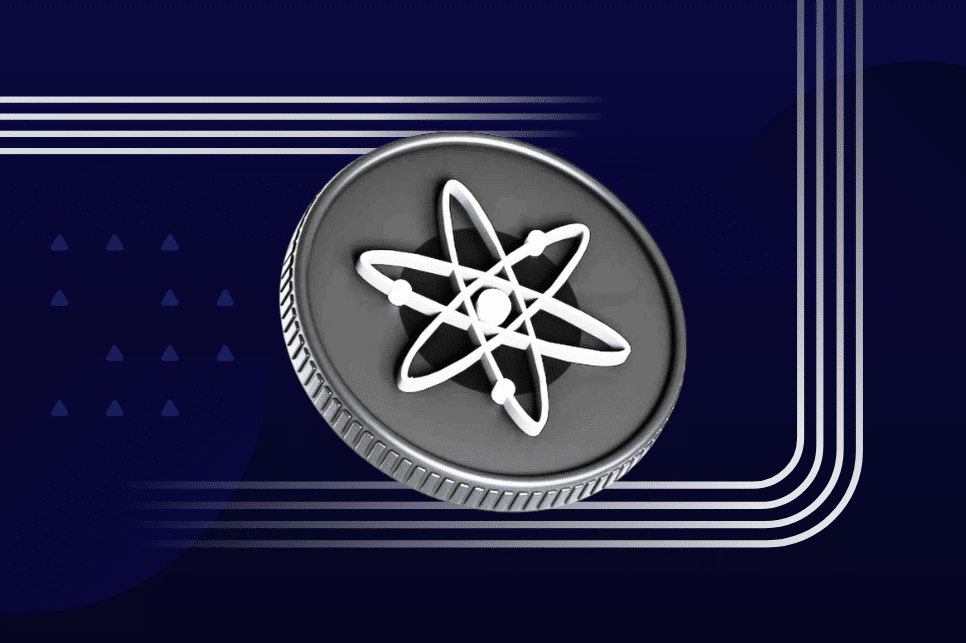Blockchain technology has revolutionized how we store, transfer, and secure data, but it’s not without its challenges. One of the biggest hurdles has been interoperability – the ability for different blockchains to communicate and share information. Cosmos, often called “The Internet of Blockchains,” was created to address this challenge. By enabling communication between blockchains, Cosmos is shaping a future where data and assets can move freely across decentralized networks, unlocking new possibilities for innovation.
Key Takeaways
- Interoperability: Cosmos allows different blockchains to communicate and share data, breaking down the barriers that previously kept them isolated.
- Scalability: The modular architecture of Cosmos prevents network congestion and ensures that high transaction volumes can be processed efficiently.
- Sustainability: Cosmos uses a Proof-of-Stake consensus mechanism, which significantly reduces energy consumption and provides an environmentally friendly alternative to traditional blockchain systems.
What is Cosmos?
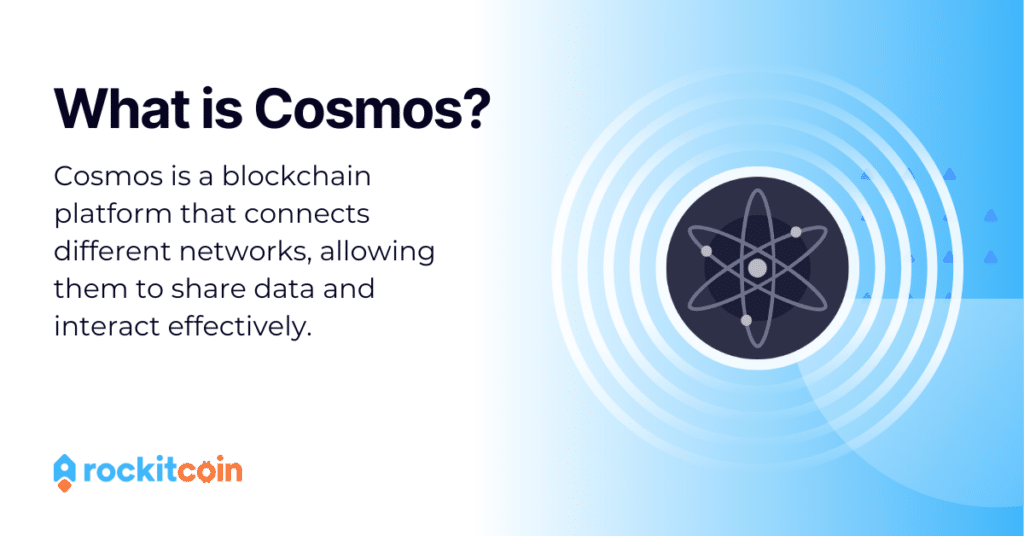
Cosmos is a platform built to connect different blockchain networks, creating an ecosystem where collaboration and efficiency thrive. When blockchain technology first emerged, most networks operated in isolation, making it difficult to share data and assets. Cosmos was developed to solve this problem by providing a solution that focuses on scalability, independence, and eco-friendliness.
Launched in 2019, Cosmos runs on its native cryptocurrency, ATOM. This token is vital for keeping the network secure, processing transactions, and enabling governance decisions. With its innovative modular design and powerful tools, Cosmos is leading the charge in making blockchain interoperability a reality.
History and Development of Cosmos
Cosmos was founded in 2014 by Jae Kwon and Ethan Buchman, who also developed the Tendermint consensus algorithm. The Cosmos white paper was published in 2016, and the ATOM ICO in 2017 raised $17 million.
Key milestones include:
- 2019: Cosmos mainnet launch.
- 2020: Introduction of Inter-Blockchain Communication Protocol (IBC) for seamless blockchain communication.
- Ongoing developments: Bridges will connect Cosmos with Polkadot and other networks.
The Vision Behind Cosmos
Cosmos was created to solve three major challenges in blockchain technology:
Sovereignty
Many blockchains rely on a single chain, which limits their independence and flexibility. Cosmos changes this by letting developers build independent blockchains, called zones, that can still connect and communicate with others. This approach gives developers full control over their blockchains without sacrificing the ability to collaborate with the wider network.
Scalability
As transaction volumes increase, many blockchains face congestion and higher fees. Cosmos tackles this problem with its modular design, which spreads workloads across multiple zones. This ensures the system remains fast and efficient, even when handling large amounts of data.
Sustainability
Unlike energy-intensive Proof-of-Work (PoW) systems like Bitcoin, Cosmos uses a more eco-friendly Proof-of-Stake (PoS) consensus algorithm. This drastically reduces energy use while maintaining the security and reliability of the network.
Compare Proof of Work vs Proof of Stake
The creators of Cosmos envision a future where blockchain technology is easy to use, highly efficient, and accessible to everyone through their interoperable framework.
The Technology Behind Cosmos
The Cosmos network is built on a layered structure that makes it powerful and flexible. These layers work together to connect blockchains in an efficient way:
Tendermint Byzantine Fault Tolerance (BFT)
At the heart of Cosmos is the Tendermint BFT engine, a tool that keeps the network secure and running smoothly. This system helps developers create blockchains faster because they don’t have to start from scratch. Tendermint validates transactions, syncs the network, and processes thousands of transactions per second, making it fast and reliable.
Cosmos Hub and Zones
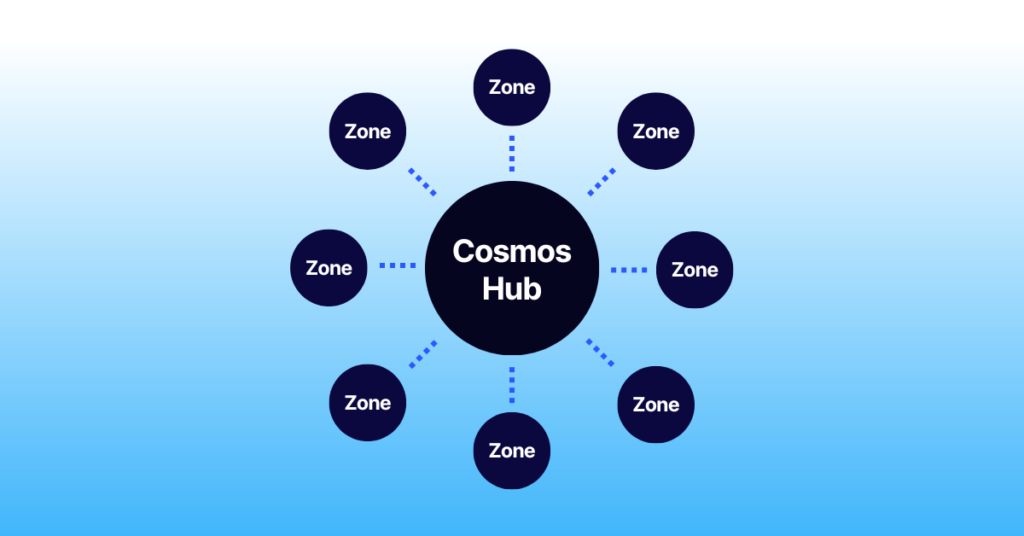
The Cosmos ecosystem is made up of the Cosmos Hub and zones, which are separate blockchains that can connect to each other. The Cosmos Hub is like the center of the system, keeping track of all the zones. Each zone is its own blockchain with its own rules and tokens, giving developers the freedom to build what they need while staying connected to the rest of the network.
Inter-Blockchain Communication Protocol (IBC)
IBC is the system that allows blockchains in Cosmos to talk to each other. It lets them securely share data and move assets, even if they use different technologies. This communication is what makes Cosmos stand out as a truly connected blockchain network.
Cosmos SDK
The Cosmos SDK is a toolkit that makes building blockchains easier. It comes with ready-made features like staking, governance, and token management, so developers can focus on customizing their blockchains. This saves time and reduces complexity, making blockchain creation accessible to more people.
How Cosmos Works
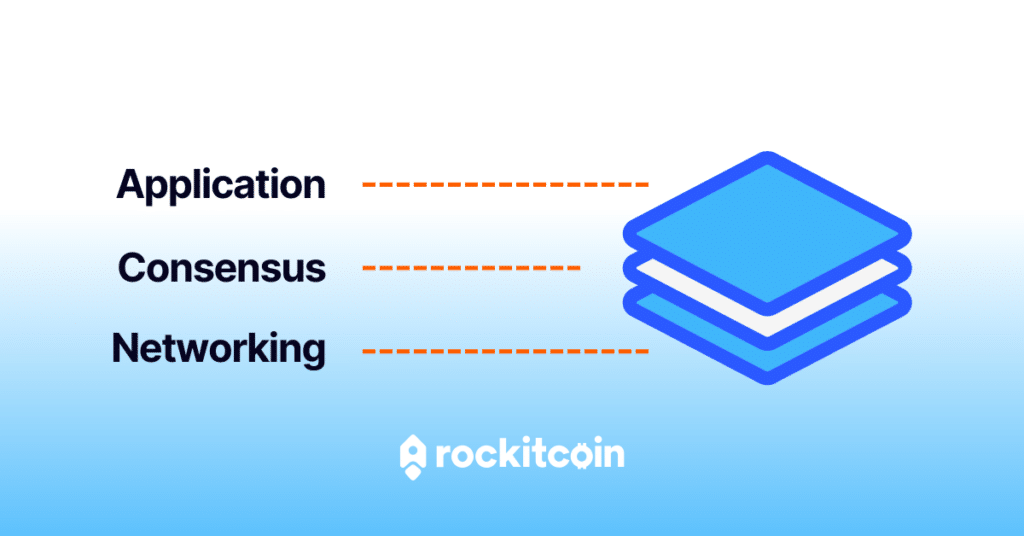
Cosmos works through three key components that ensure its blockchains run efficiently and stay connected.
- Application Layer: The application layer is responsible for handling all transactions and updating the blockchain’s current state. It ensures that every action, such as transferring assets or executing smart contracts, is accurately recorded and reflected across the network.
- Networking Layer: The networking layer allows different blockchains and zones within Cosmos to communicate with each other. This layer securely transfers data and assets between chains, enabling interoperability and collaboration across the ecosystem.
- Consensus Layer: The consensus layer ensures that all nodes in the network agree on the current state of the blockchain. Using the Tendermint engine, this layer provides fast and secure validation of transactions, keeping the network reliable and synchronized.
By combining these layers with tools like Tendermint and IBC, Cosmos offers a strong foundation for creating and connecting blockchains.
The ATOM Token
ATOM is the native cryptocurrency of the Cosmos ecosystem and serves several essential functions:
- Transaction Fees: ATOM is used to pay transaction fees within the network.
- Staking: Validators stake ATOM to secure the network and earn rewards.
- Governance: Token holders can vote on proposals for network upgrades and changes.
Tokenomics
Unlike cryptocurrencies with a fixed supply (like Bitcoin’s supply), ATOM’s supply is inflationary. The annual inflation rate ranges from 7% to 20%, depending on the percentage of ATOM staked. This model incentivizes staking, ensuring network security and stability.
Benefits of Cosmos
Cosmos offers several advantages that make it a standout in the blockchain world:
- High Scalability: The modular design and interconnected zones prevent congestion and improve transaction throughput.
- Interoperability: Cosmos’ IBC protocol enables seamless communication between blockchains, fostering collaboration.
- Sustainability: The PoS consensus algorithm significantly reduces energy consumption compared to PoW systems.
- Developer-Friendly: Tools like the Cosmos SDK make it easier to build custom blockchains.
Challenges and Limitations
While Cosmos has numerous strengths, it also faces challenges:
- Decentralization Concerns: The top 100 validators control governance, raising questions about centralization.
- Inflationary Tokenomics: The lack of a supply cap may deter some investors.
- Competition: Platforms like Polkadot offer similar interoperability features, intensifying competition.
Use Cases of Cosmos
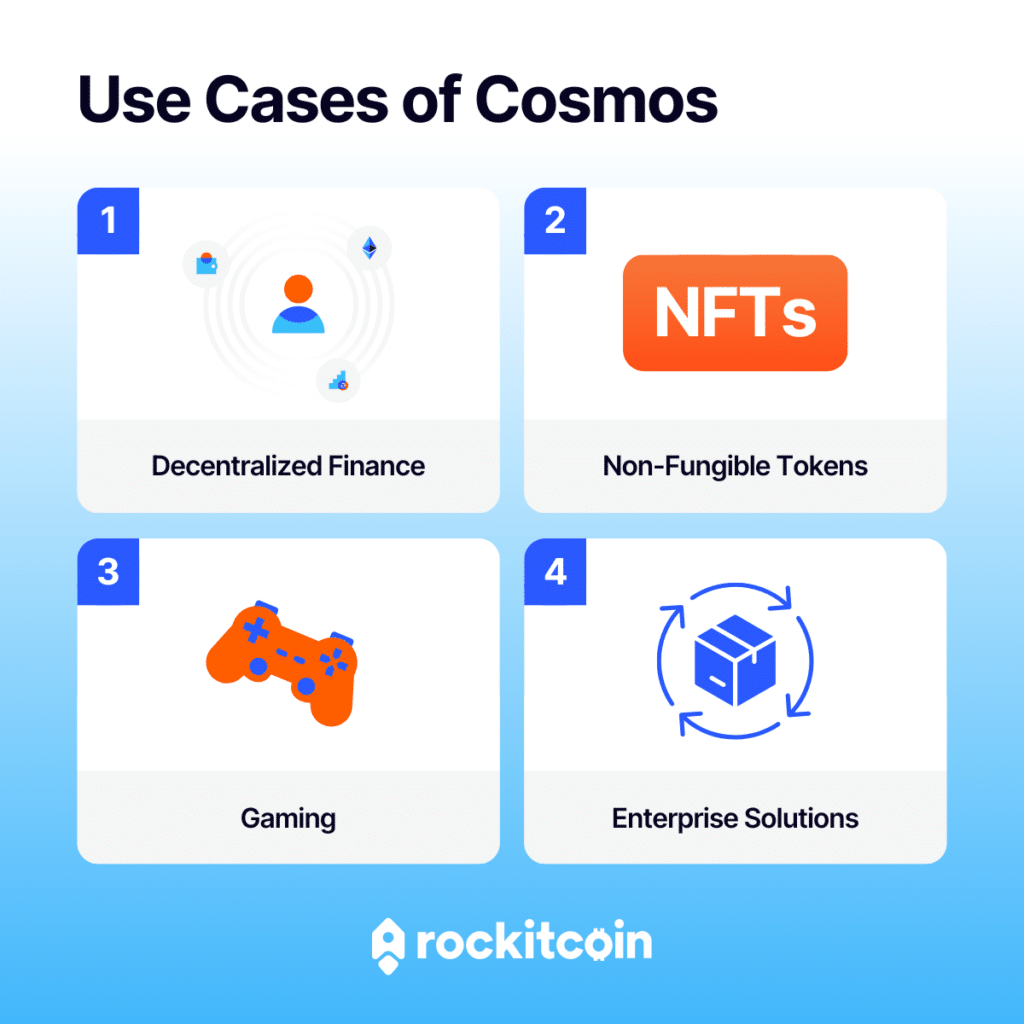
Decentralized Finance (DeFi)
Decentralized Finance (DeFi) is one of the most important applications of Cosmos. Using the Inter-Blockchain Communication (IBC) protocol, Cosmos makes it easy to transfer assets and liquidity between blockchains. This allows for innovative financial solutions, like multi-chain liquidity pools and decentralized exchanges, which improve how users interact with DeFi.
Non-Fungible Tokens (NFTs)
Cosmos is also a great platform for Non-Fungible Tokens (NFTs). With IBC, NFTs can move across different blockchains, making them more useful and accessible. This creates opportunities for cross-chain NFT marketplaces, where creators and collectors can connect more easily.
Gaming
The gaming industry benefits from Cosmos because it lets developers build unique, blockchain-based games. Using the Cosmos SDK, they can create in-game economies with tradable assets and digital currencies. This approach allows games to be customized while staying connected to other blockchains, adding more value for players.
Enterprise Solutions
Cosmos provides secure and scalable tools for businesses, especially in areas like supply chain management and data security. Its modular design allows companies to create specialized blockchains tailored to their needs. By integrating blockchain technology, businesses can improve efficiency and transparency in their operations.
Cosmos vs. Other Blockchain Platforms
Cosmos vs. Ethereum
- Interoperability: Cosmos excels with its IBC protocol, while Ethereum relies on wrapped tokens for cross-chain transfers.
- Scalability: Cosmos’ Tendermint engine handles more transactions per second, avoiding Ethereum’s congestion issues.
- Sustainability: Cosmos’ PoS system is equivalent to Ethereum’s current PoS model.
Cosmos vs. Polkadot
- Governance: Cosmos allows independent zones to define their own rules, while Polkadot relies on a unified security model.
- Interoperability: Cosmos uses IBC, enabling zones to communicate freely, while Polkadot’s parachains depend on the Relay Chain.
How to Buy ATOM
Buying ATOM is simple and straightforward, especially when using the RockItCoin app. Here’s how you can get started:
- Download the RockItCoin App: Visit the App Store or Google Play to download the RockItCoin app, your gateway to buying cryptocurrencies like ATOM.
- Create an Account: Sign up and complete the quick registration process to set up your account.
- Add Funds: Choose ‘Buy Crypto with a Credit or Debit Card’ and enter the amount you’d like to buy.
- Purchase ATOM: You’ll be taken to our trusted Partner Simplex or Paybis to complete your transaction. Your ATOM will be sent to your wallet shortly after!
The RockItCoin app makes buying ATOM easy and secure, allowing you to participate in the Cosmos ecosystem and enjoy the benefits of its innovative technology.
The Future of Cosmos
Cosmos continues to evolve, with several exciting developments on the horizon:
- Interchain Security: Enhancing security across interconnected chains.
- Advanced Bridges: Expanding interoperability with platforms like Polkadot and Ethereum.
- DeFi and NFT Growth: Leveraging IBC for broader adoption in these sectors.
Final Thoughts
Cosmos is leading the way toward a future where blockchains can connect and work together without barriers. By focusing on interoperability, scalability, and eco-friendly solutions, Cosmos has become a major player in the blockchain world. It’s helping to create a decentralized future where blockchains can unlock their true potential and drive new technological advancements. You can easily be part of this growing ecosystem by using the RockItCoin app to securely buy ATOM and start exploring all that Cosmos has to offer!
FAQs About Cosmos (ATOM)
What is Cosmos?
Cosmos is a platform designed to enable seamless communication between blockchains, promoting interoperability and scalability.
What makes Cosmos unique?
Cosmos’ modular architecture, IBC protocol, and developer-friendly tools set it apart from other blockchain platforms.
How does Cosmos achieve interoperability?
Cosmos uses the Inter-Blockchain Communication (IBC) protocol to allow secure and efficient data and asset transfers between independent blockchains.
What is the role of the Cosmos Hub?
The Cosmos Hub is the central blockchain that connects all other blockchains (zones) within the Cosmos ecosystem, ensuring interoperability and security.
How can I buy ATOM?
ATOM can be purchased on the RockItCoin app with a credit or debit card.
What wallets support ATOM?
Wallets like Ledger, RockItCoin, Trust Wallet, and Exodus support ATOM.
Is Cosmos energy-efficient?
Yes, Cosmos uses a Proof-of-Stake (PoS) consensus mechanism, which significantly reduces energy consumption compared to Proof-of-Work (PoW) systems.
What are some use cases of Cosmos?
Cosmos is used in various applications, including decentralized finance (DeFi), cross-chain NFT transfers, blockchain-based gaming, and enterprise solutions like supply chain management.
